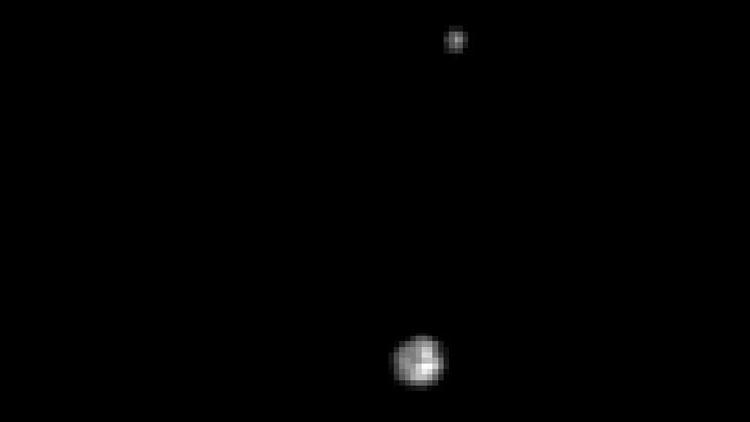New Horizons interplanetary station successfully wakes from sleep mode

The best image so far of Pluto and Charon (Hubble, 1994)
As previously reported , the New Horizons interplanetary station, which is now 2.9 billion kilometers from Earth, has successfully woken up. Scientists learned about this thanks to the corresponding signal from the station. According to experts, there is nothing outstanding in the fact that the station came out of hibernation - during its journey New Horizons fell asleep and woke up many times.
Nevertheless, the fact that the station is in operating mode is great news. Soon, New Horizons will begin a rapprochement with Pluto and its satellite Charon. By the way, Charon was discovered only in 1978, and Pluto - in 1930. Interestingly, the Pluto-Charon center of mass is located outside of Pluto, so some scientists believe that Charon should not be considered to be a satellite of Pluto at all, but the same planetoid. The Pluto-Charon system itself, according to the same theory, is a binary planetary system. However, due to the features of the current classification, Charon was not included in the number of dwarf planets (unlike Pluto), therefore, the planetary system "Pluto-Charon" can not be called now.
It's ALIVE! The @NASANewHorizons mission control just received full confirmation at 9:53 pm ET! Pluto get ready! pic.twitter.com/Gj9lujGU98
- NASA (@NASA) December 7, 2014Another interesting point that was mentioned in the material about the imminent awakening of the New Horizons station: Charon, unlike Pluto, is covered with water ice, and there is a theory according to which an icy ocean of liquid water can exist on Charon.

Another photograph of the Pluto system obtained by Hubble in 2005.

Perhaps this is the view that will appear to the observer from the surface of Pluto (a bright star is the Sun, and a shaded disk is Charon)
Anyway, the Hew Horizons station should soon be close to Pluto only 12.5 thousand kilometers, which will make it possible to make very high-quality images of the system. The maximum rapprochement with Pluto should occur on July 14, 2015. The station, scientists hope, will be able to clarify one more point: the existence of a connected atmosphere of Pluto-Charon.
English-language videoconference of scientists discussing the New Horizons mission. The
station's scientific tools should help scientists obtain detailed information about Pluto and Charon, including the possibility of having their own magnetosphere in Pluto, data on the atmospheric composition of Pluto and Charon, as well as on the interaction of both planetoids. At the moment, almost nothing is known about the system, due to its distance from the Sun.
